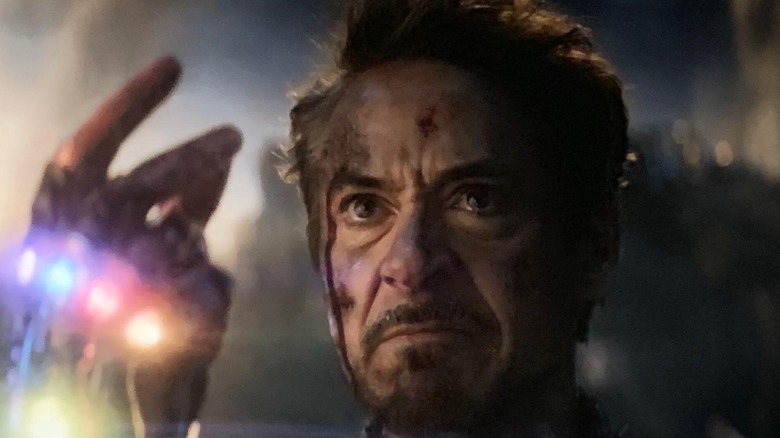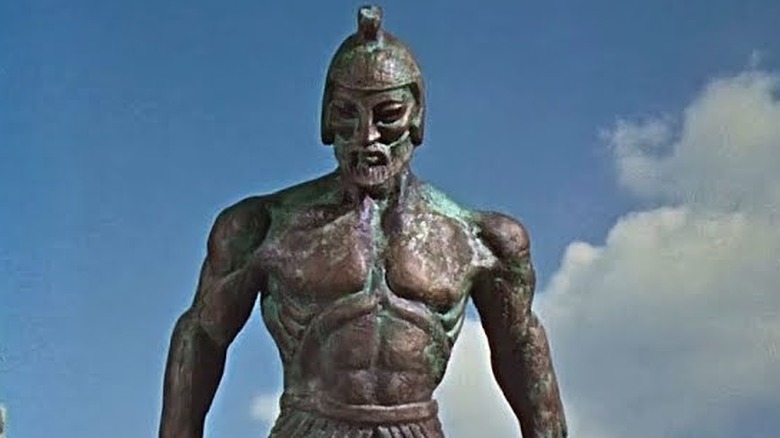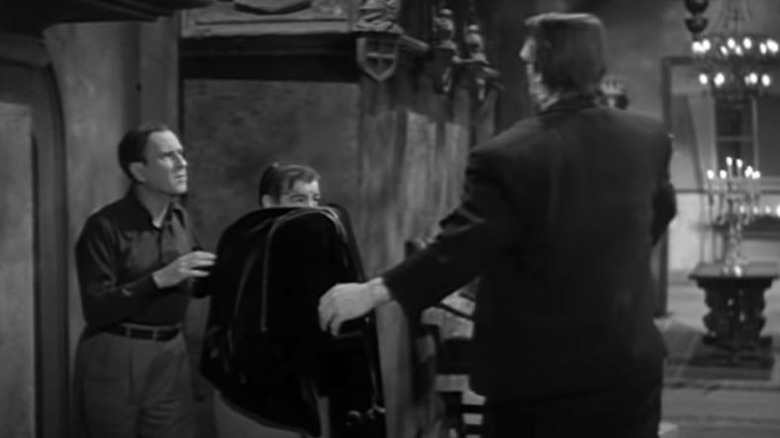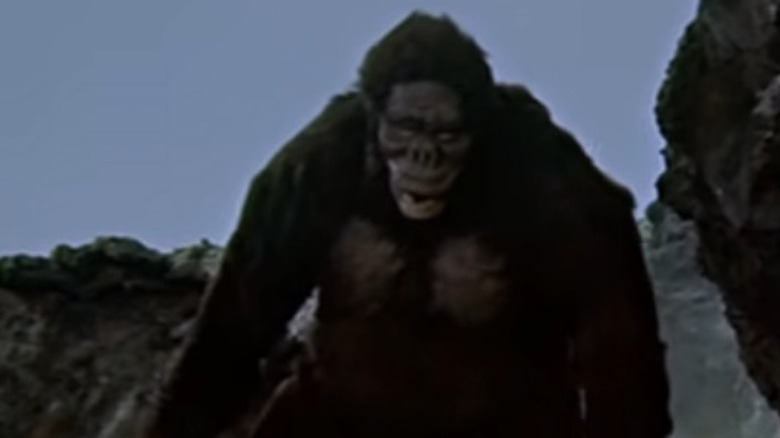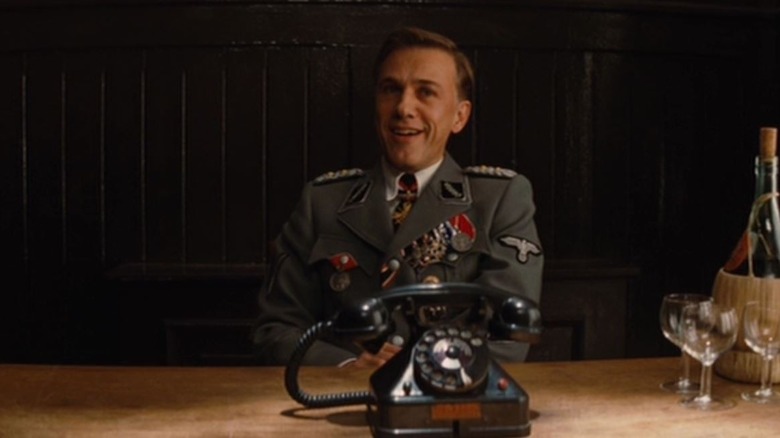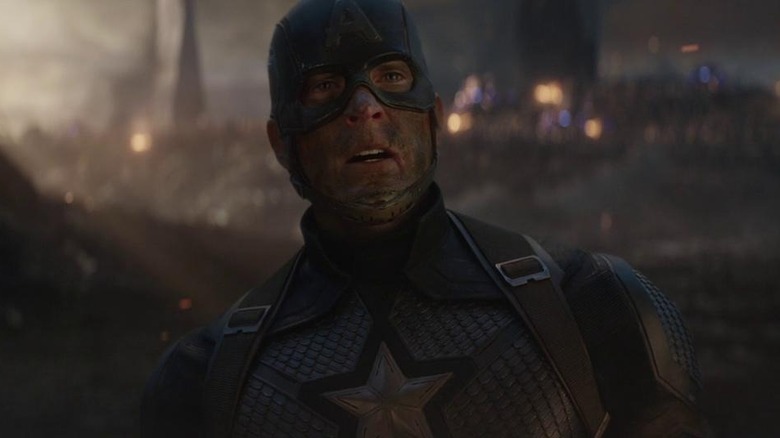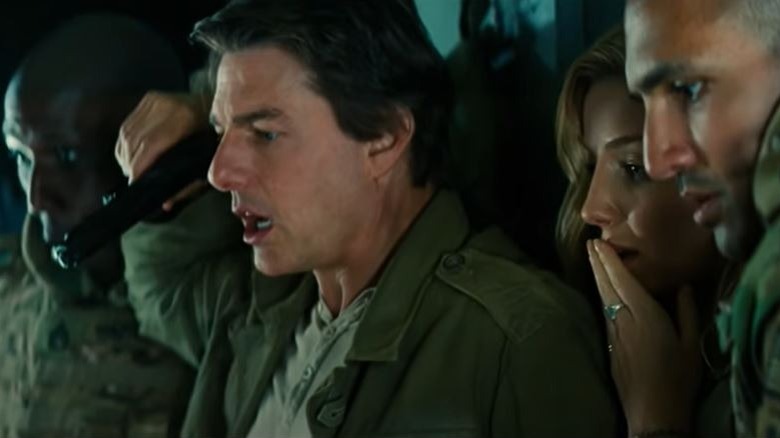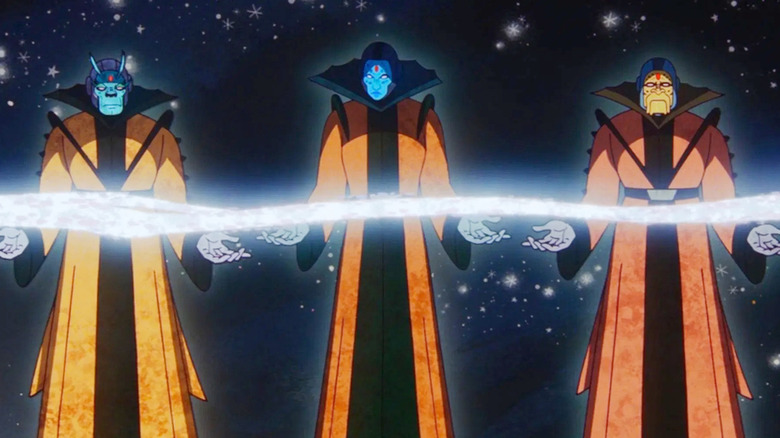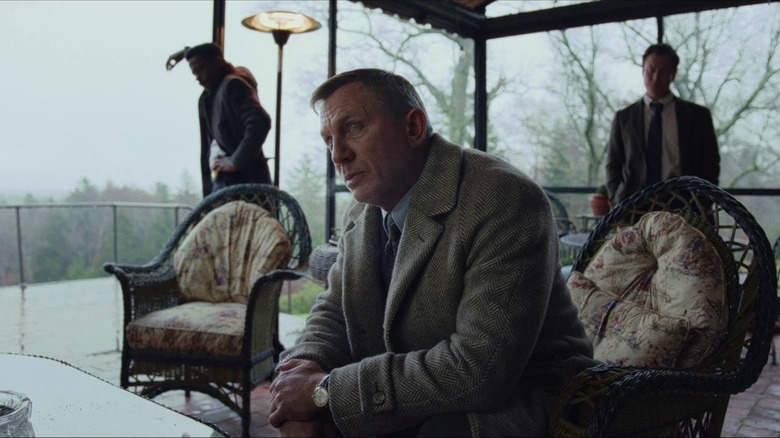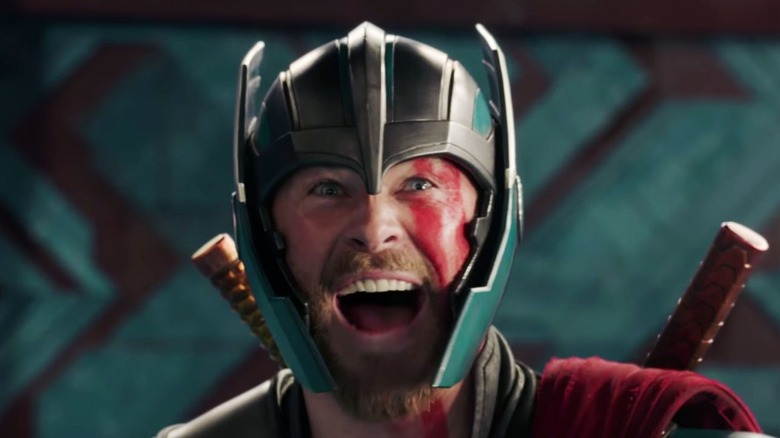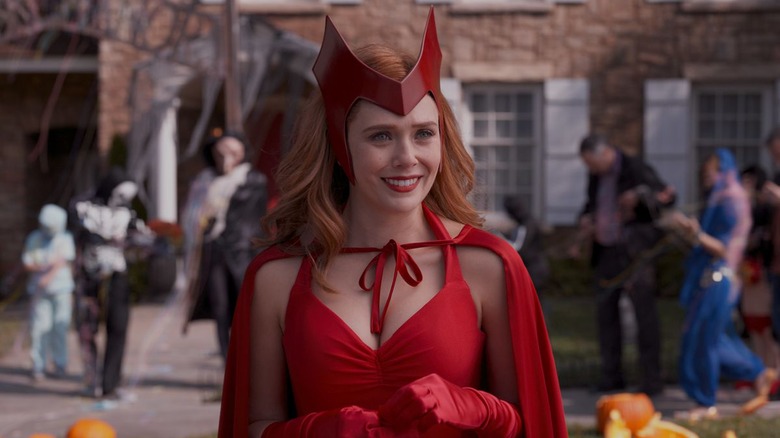How Cinematic Universes Changed Hollywood
These days it seems like every major studio wants to develop some sort of shared cinematic universe. With the popularity (and profitability) of the Marvel Cinematic Universe, we've seen numerous attempts to expand film worlds and create new film worlds that span multiple properties in interconnected fashion. It's a trend that's become more popular since 2012's "Avengers," but the cinematic universe phenomena definitely didn't start with Marvel — or even this millennium.
The recent proliferation of cinematic universes has massive implications for media and storytelling in the future. Here, we'll dig into the history of these cinematic universes, from the literary roots of shared universes through the early and mid-20th century filmmakers who advanced them, and move into some of today's most influential trends. Some attempts to build cinematic universes have been wildly successful, others decidedly less so, but the popularity of the project continues to change Hollywood. Here are some of the most impactful ways that cinematic universes changed Hollywood.
Shared Universes have deep literary forebears
In the literary world, having vast interconnected literary universes (either throughout one authors' works or spanning many) is nothing new. Ancient Greek literature contains a variety of characters that weave in and out of various authors' texts. This literature includes the notable Argonauts, a group of powerful heroes and demigods like Jason, Orpheus, Heracles, and others who were developed in prior works and woven together in one epic tale. A more recent series of interwoven, multi-authored literary universes spans Lovecraft's Cthulhu Mythos, where characters, Elder Gods, and Great Old Ones from H.P. Lovecraft's stories were borrowed freely by writers like Clark Ashton Smith and August Derleth to create a massive cosmic horror world.
Massive single-author interconnected worlds have also proliferated, such Honore de Balzac's "The Human Comedy," a massive fictional universe that connected around 90 completed novels and novellas (and was intended to incorporate all aspects of human society). A more recent massive single-author mythos spans the works of Stephen King, with numerous writings connected by his "Dark Tower" series alongside numerous shared locations, Easter Eggs, and characters. Crossovers also became a longstanding practice in comic book history, with the first comic crossover in history took place in "Marvel Mystery Comics #8," unifying Namor the Sub-Mariner and the Human Torch in a plot that sees the pair fight. DC followed suit months later in "All-Star #3," creating the Justice Society of America.
The first cinematic universe started with Universal Monsters
While cinematic universes are extraordinarily popular now, their popularity began much earlier in the history of cinema through Universal's slate of classic monsters. These films began in the 1920's with "The Hunchback of Notre Dame" and "The Phantom of the Opera" but really took off with its excellent 1931 slate of films like "Dracula" and "Frankenstein." Universal introduced a number of iconic creatures in subsequent films like "The Mummy" (1932), "The Invisible Man" (1933), "The Bride of Frankenstein" (1935), and "The Wolf Man" (1941).
In 1943 the studio made the first film to star more than one of its monster stable, "Frankenstein Meets the Wolf Man." This series of crossovers continued in titles like 1944's "House of Frankenstein" (with The Wolf Man, Count Dracula, and Frankenstein's Monster) and 1945's "The House of Dracula" (with the same three returning). Later, it even expanded into a series of horror-comedies, like "Abbott and Costello Meet Frankenstein." These films paved the way for subsequent cinematic universes way before "cinematic universe" became a household term.
Godzilla built a cinematic universe that's still going
While Universal's slate of classic monsters transformed over the decades from individual horror pictures to interwoven film worlds, Toho's "Godzilla" was one big expanding cinematic universe. The first "Godzilla" was a solo outing, but it was immediately followed by 1955's "Godzilla Raids Again" that pit Godzilla against another beast for the first time. Other independent kaiju films emerged in short succession, such as "Rodan" (1956) and later "Mothra" (1961).
Godzilla would soon start pulling monsters from other franchises starting with 1962's "King Kong vs. Godzilla," an interesting utilization of the RKO-owned U.S. behemoth. This move initiated a massive multimedia franchise that would see characters like Rodan and Mothra pulled in regularly alongside a growing roster of new kaiju to fight. While the Universal Monsters invented the cinematic universe by evolving into it, the Godzilla franchise evolved into it much more quickly and in a dedicated way — effectively building an entire franchise around the concept. The result? The creation of some of the most iconic and influential monsters of all time, the invention of both the kaiju genre and the suitmation SFX technique, and keeping the cinematic universe tradition alive.
Other experiments in cinematic universes
Before studios started building vast, planned, multi-director MCU-style cinematic universes, many film properties evolved from their earlier origins into what could now be called cinematic universes via the use of crossovers and Easter eggs. "Freddy vs. Jason," for example, unified the "Friday the 13th" and "A Nightmare on Elm Street" franchises in a crossover that otherwise had relatively little franchise impact. Similarly, "Alien vs. Predator" followed up on some seeds that were planted in comics and "Predator 2," putting the Xenomorphs and Yautja firmly in the same universe. The crossover became a pair of films whose continuity with either original franchise is in dispute, but which nonetheless has entertaining cinematic universe implications.
Some auteurs like Quentin Tarantino have also built a number of their respective films into shared cinematic universes. Tarantino himself has acknowledged that his own oeuvre contains two distinct shared universes, as explained in a 2017 interview with Esquire: "There's the realer than real universe, alright, and all the characters inhabit that one. But then there's this movie universe. And so 'From Dusk Till Dawn,' 'Kill Bill,' they all take place in this special movie universe. So basically when the characters of 'Reservoir Dogs' or 'Pulp Fiction,' when they go to the movies, 'Kill Bill' is what they go to see. 'From Dusk Till Dawn' is what they see."
These experiments kept cinematic universe-building alive while experimenting with the possibilities thereof in novel ways.
The Marvel Cinematic Universe changes the game
By the time "Iron Man" came to theaters, superhero movies were already major attractions. Marvel Studios had bought back movie rights to comic heroes like Thor and the Hulk by 2006, and at the 2006 San Diego Comic-Con producer Kevin Feige announced the studio was actively thinking about crossover potential. From "Iron Man" onward, the studio made frequent use of the post-credits teaser, giving audiences a crossover linkage in these early films that added to what was otherwise a standalone story.
As the Marvel Cinematic Universe grew, its roster of characters expanded. The crossover films like "The Avengers," "Infinity War," and "Endgame" repeatedly brought large numbers of these independently developed characters into one common space. Also notable is that the MCU wove these stories together in films outside these massive crossover films, like 2016's "Captain America: Civil War" or 2017's "Thor: Ragnarok." MCU's first innovation stems from the extent to which distinct films with different creators weave characters and stories from other MCU films in and out continuously. What makes the MCU stand out in particular is the extensive scheduling and planning for the stories, character introductions, and overarching villains, where the individual films have to both stand alone and contribute towards a larger narrative.
Everybody wants to start a cinematic universe
The massive critical and commercial success of the MCU has resulted in a number of changes to normal Hollywood practices. One of the most immediate effects of Marvel's growing success are competing studios constructing of their own cinematic universes to mixed results. The Legendary "Monsterverse" now includes a new "Godzilla vs. Kong," which proved profitable despite the pandemic. That film benefitted from the patient build up of Godzilla and Kong in separate, successive films. One of the most successful of the other cinematic universes centers around "The Conjuring" series, gradually expanding its world film-by-film without signs of stopping anytime soon.
One of the most tumultuous attempts is the DC Extended Universe, Warner Bros.' own challenger to the MCU throne. After a succession of variably profitable but ill-received films–"Batman v. Superman: Dawn of Justice," "Suicide Squad," and "Justice League" — they dropped their plans for a unified cinematic universe and have since shifted to allow self-contained movies. The biggest casualty of this multi-studio rush to build cinematic universes was Universal's failed attempt to create a "Dark Universe" of monster properties. 2017's "The Mummy," the planned starting point, failed to perform to expectations and showed how hard it is to follow Marvel's footsteps. Both the early DCEU and the Dark Universe fell short by trying jump almost immediately into a cinematic universe without the careful, long-term planning that Marvel pioneered.
The MCU normalized a full slate of tightly planned films
While Godzilla built a multi-decade franchise around a set of characters, it didn't build a singular continuity with an overarching plan out of them. Moreover, no franchise has normalized the level of regular output that Marvel has built towards. Behind Marvel's massive output lies another aspect that is impacting Hollywood's approach to cinematic universe building: massive planning.
As of the beginning of this 2021, MCU chief Kevin Feige told Collider that Marvel have planned "about 5 to 6 years out versus what we've announced." Each "Phase" of the MCU has produced more films per year than before, with Phase One releasing six movies over six years, while "Phase Three" produced ten movies over three years. For cinematic universe aspirants, Marvel's level of organized, high volume output is a strong goal — yet a difficult one to reach. The DCEU, for example, stumbled attempting to set up "Justice League" with only two films. The "Dark Universe" tried to launch a film that introduced too many characters in a convoluted plot, failing after one film. The "Conjuring" are easily the most successful, having slowly built their film world over a succession of films. The major lesson for Hollywood cinematic universe aspirants? Long term, big picture planning.
Mid-budget films are getting pushed aside
While Hollywood has long put out a wide range of films from low budget indie films to massive high-budget spectacles, the pursuit of cinematic universe money has resulted in a significant studio prioritization of higher budget films. The rise of the wide-scale cinematic universe has created an assumption that high budget investment yields high returns, and studios are increasingly in search of the kind of built-in audience loyalty that brings people to theaters and lessens the risk of new properties.
The consequence is the pushing of mid-budget films out of theaters and into streaming. While middle-budget films like "Knives Out" can on rarer occasion get made and be profitable, they're fewer and farther between, causing critics to decry the death of mid-budget movies over the last decade. In short, these trends regarding the prioritization of blockbusters and cinematic universes have created a critical pessimism about the ability of filmmakers to make mid-tier films, and the rise of cinematic universes share some of the blame.
The face of an 'action director' is changing
In pre-Marvel eras, action films were defined by a specific subset of directors who gained reputations by working in that genre — John McTiernan, Tony Scott, John Woo, and Michael Bay, and so forth. These directors may well have done other genres from time to time but they became nearly synonymous with action films such that studios would either each out to them first or try to emulate their style. By contrast, from Phase One Marvel, regularly brought in filmmakers from vastly different genre backgrounds to craft the uniqueness of each individual story within the overarching plan.
This strategy has resulted in some frankly novel and unexpected filmmakers at the helm of an ostensibly action-sci-fi franchise. Instead of choosing filmmakers with prior superhero pedigrees, Marvel chose filmmakers with backgrounds in Shakespeare (Kenneth Branagh), indie comedy (Taika Waititi), horror (James Gunn), television comedy (the Russo Brothers), and biographical and sports dramas (Ryan Coogler). In choosing atypical directors from different genre backgrounds, individual cinematic universe entries can fulfill the greater narrative without the creative stagnation that might otherwise occur.
The divide between film and TV projects are starting to erode
Film has long been considered the more prestigious than television, with traditionally higher budgets, better pay, meatier roles, and greater fame. As such, the biggest stars rarely moved from film into TV. These days, however, there are fewer differences between movies and TV than ever — part of which is directly thanks to modern cinematic universes.
Since 2000, analysts have often lauded the era as being one of "Peak TV," a period where high quality, well written series with more substantial roles have proliferated (particularly across cable channels). These developments, alongside the growth in Limited Series, have allowed higher budgets, film caliber stars, and talented film directors to float effortlessly between film and TV like never before.
Marvel pioneered bridging the gap between TV and film in their approach to cinematic universe building, being among the first to develop a true transmedia narrative approach to storytelling. The events of "Loki" and "WandaVision" are important links in the overall story chain, proving pivotal to the MCU's wider storytelling. Together, the elevation of the medium and the increasing integration between film and TV inside one cinematic universe have all but eroded the traditional division between the two.
